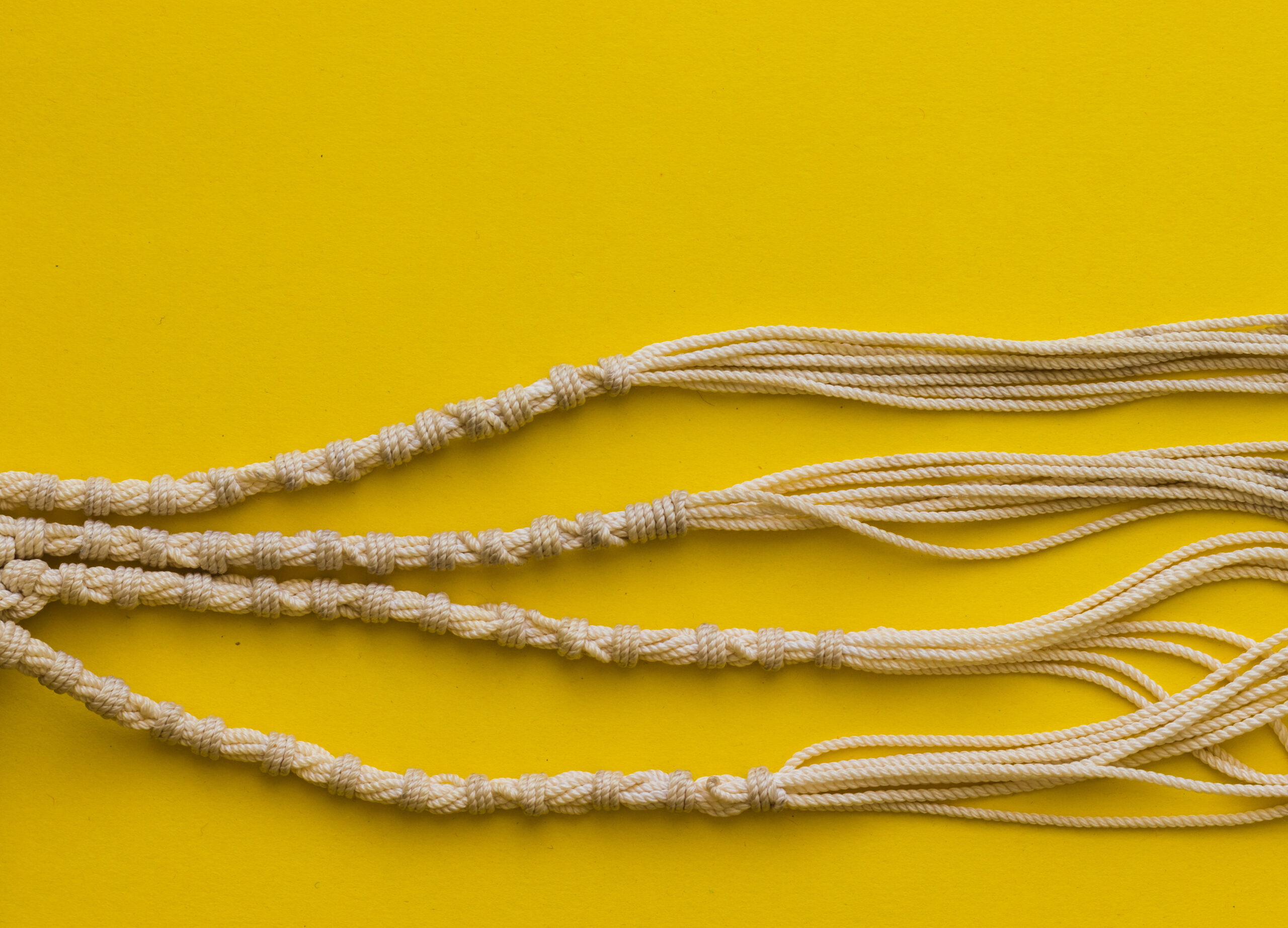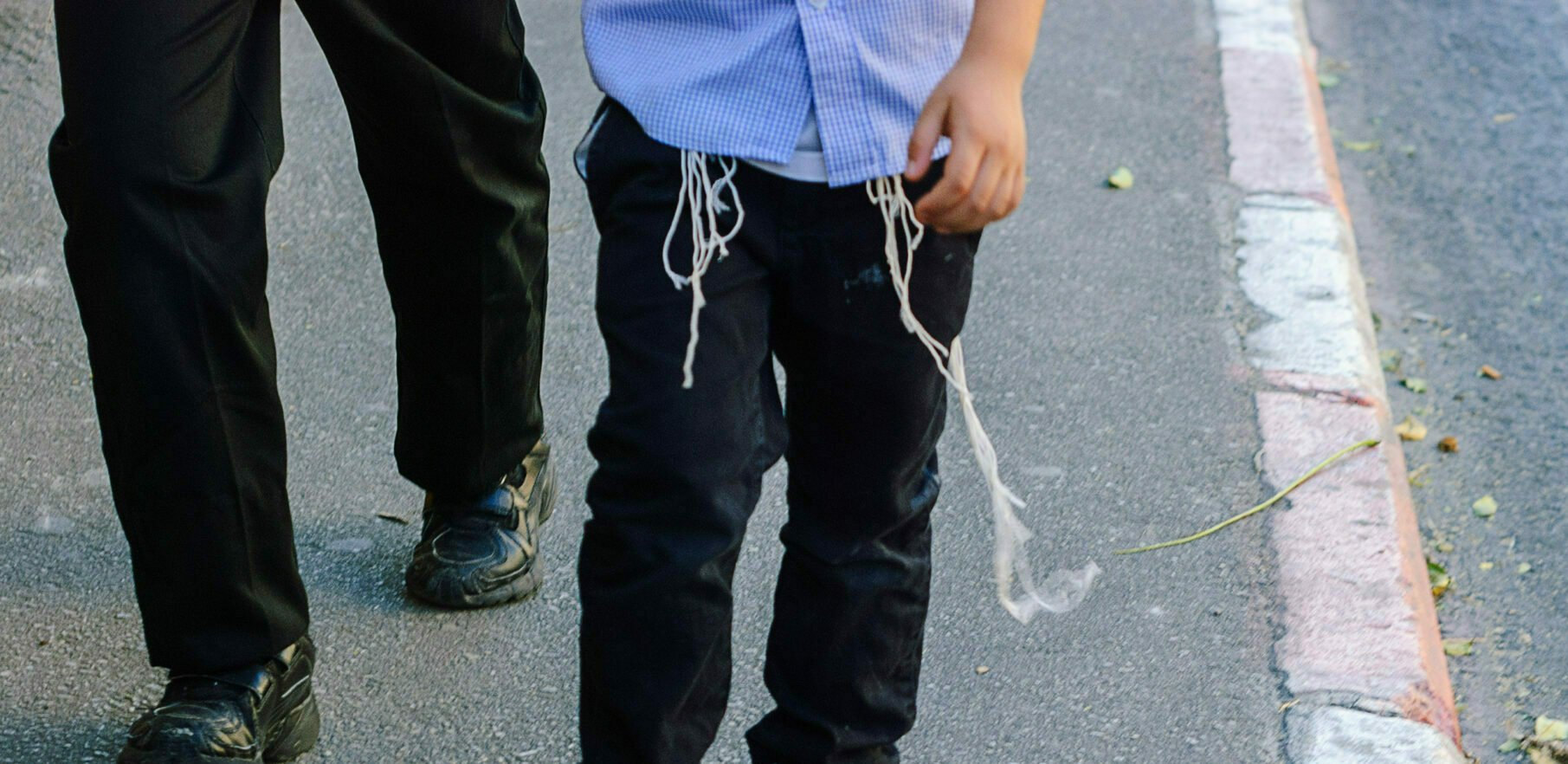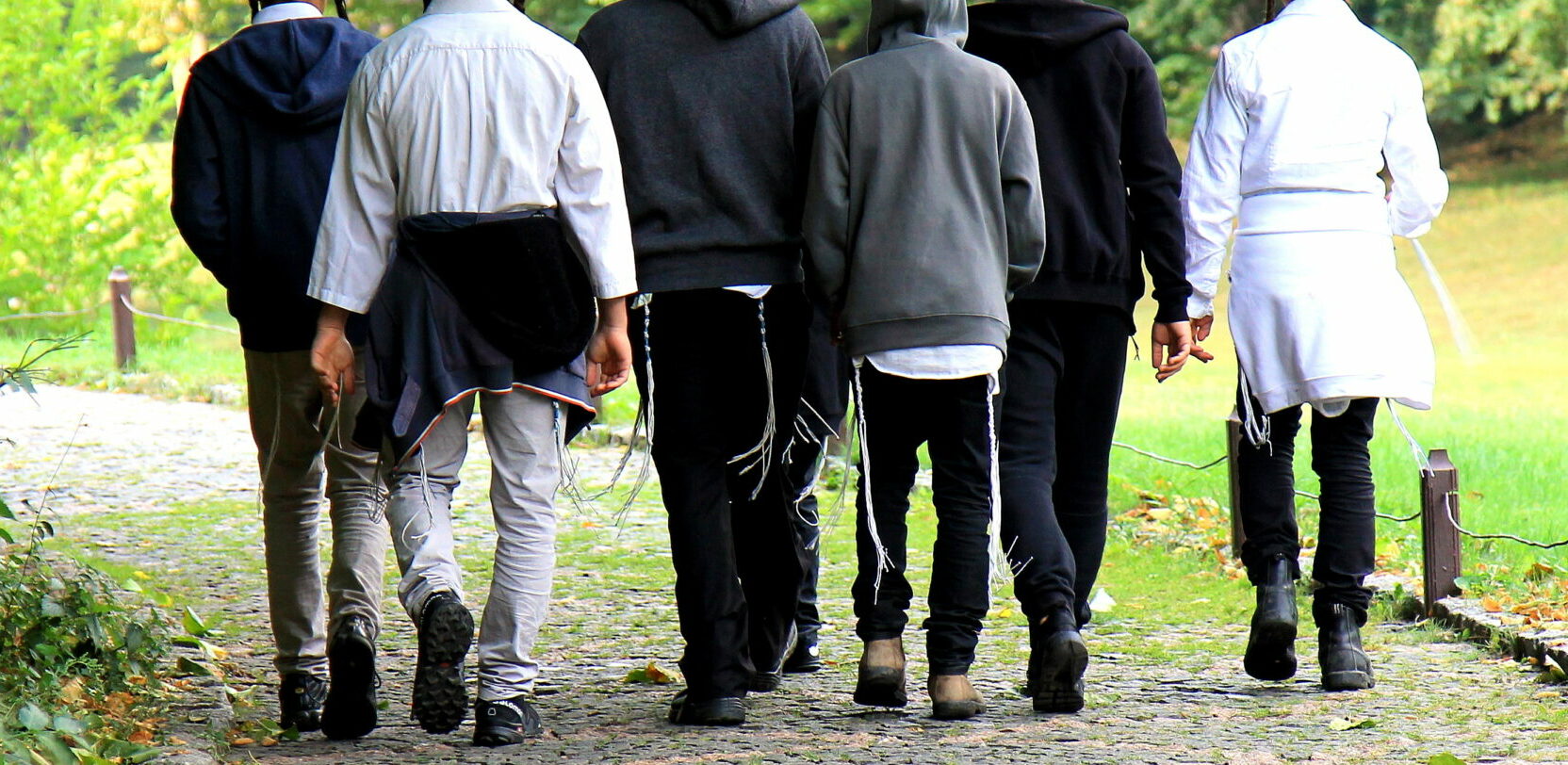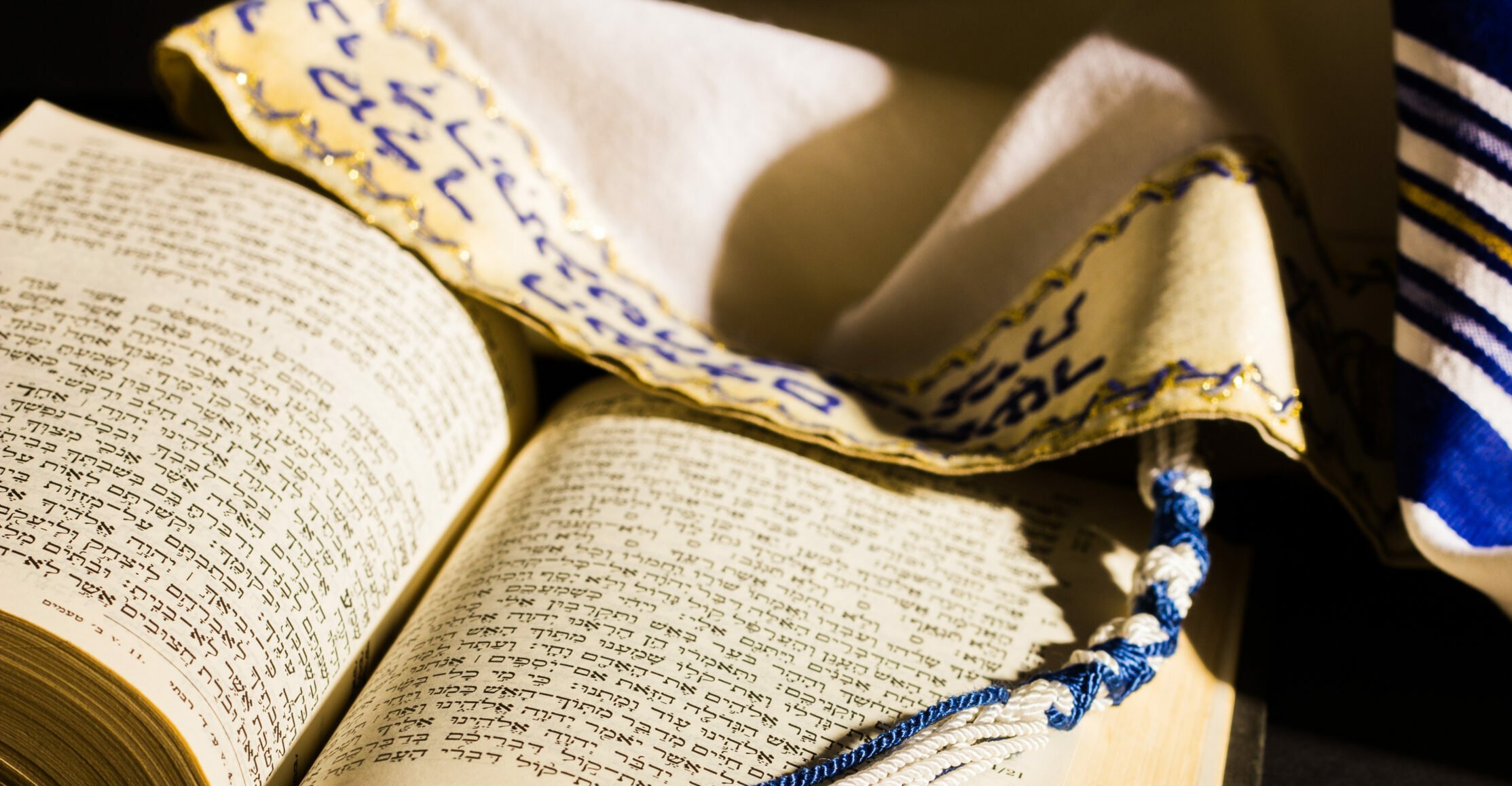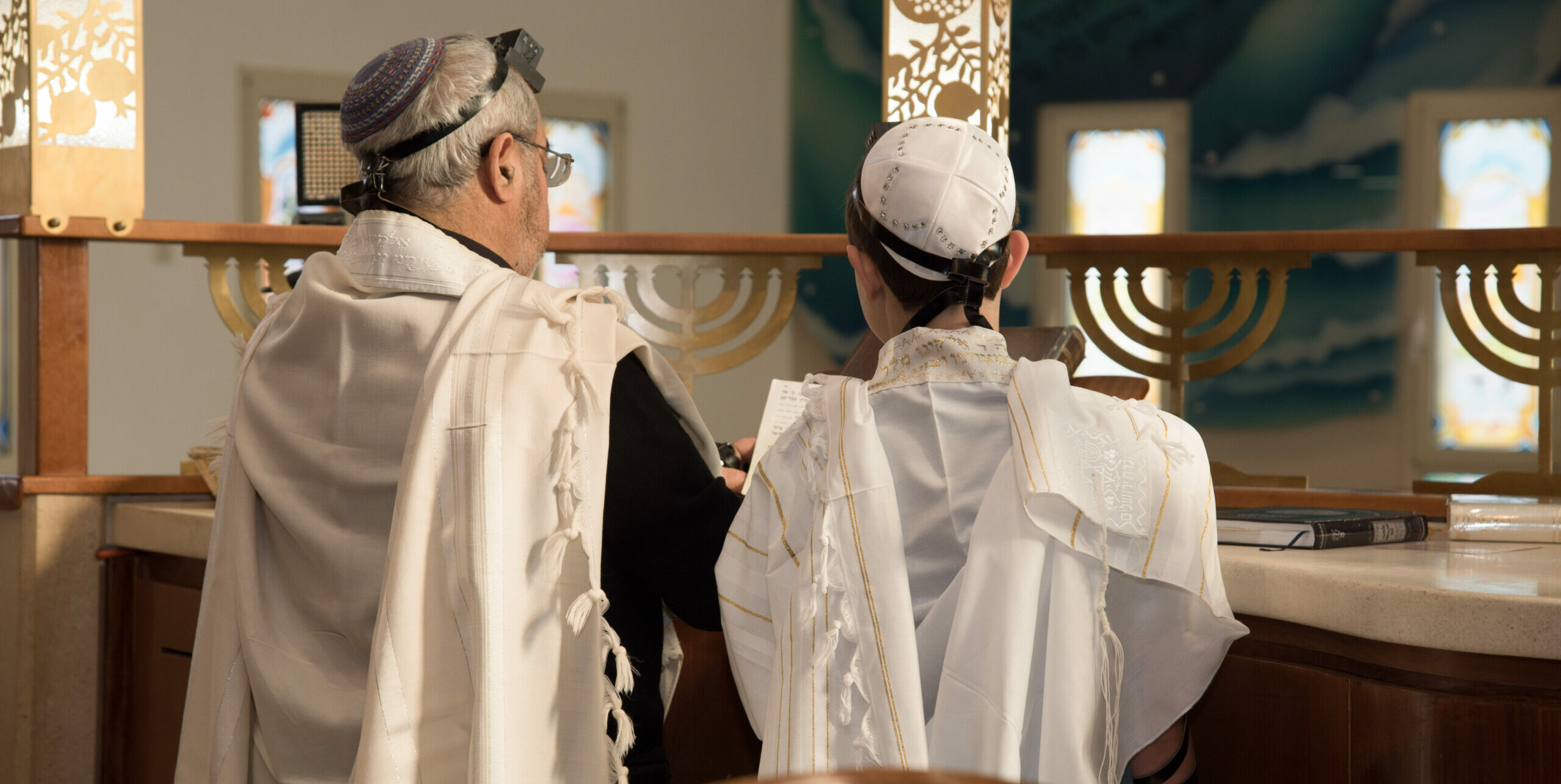Many people are familiar with the image of Jew praying in the mornings wearing a tallit, but this is only one type of tallit. What that type of prayer shawl, the tallit gadol (large tallit), looks like may be more classic or iconic, but is only one part of the picture.
The tallit katan is an undershirt usually made simply of a 4-cornered sheet with a hole in the center for the head to fit through and sometimes sewn up at the for an inch or two. This is because there is a mitzvah (commandment) that for any 4-cornered garment it needs to have particular knotted tassels known as tzitzit at each corner.
While something like jeans and a t-shirt or even a suit and tie by themselves will probably contain nothing with 4-corners like the ancient-style tunics and kaftans, it has become a (universal custom) to make sure to have such a garment.
Let’s break down a few different factors when it comes to the modern tallit katan.
